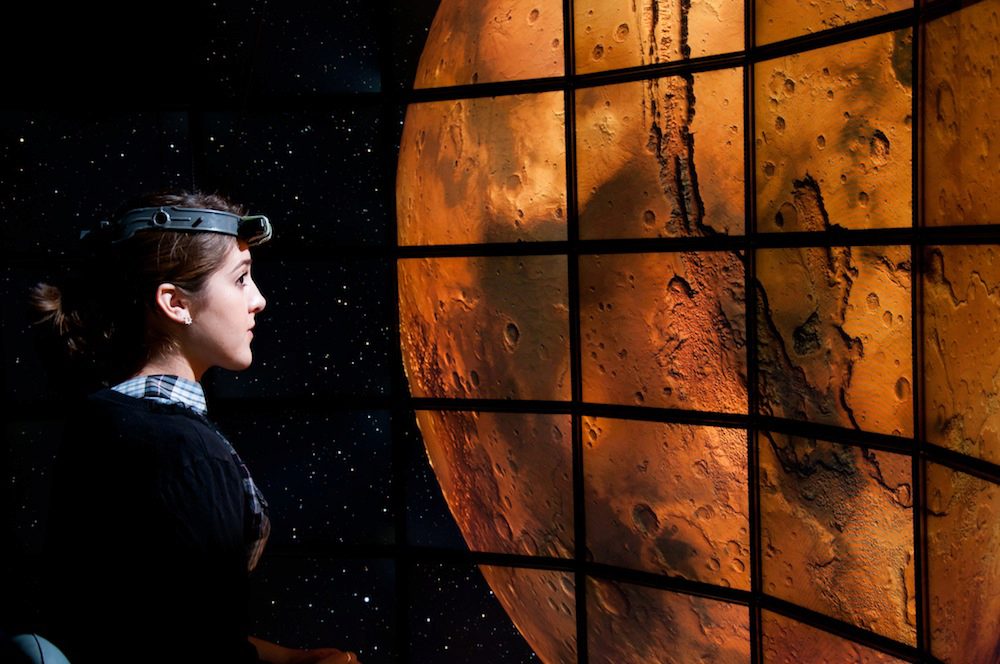VARRIER IS RETIRED: SPACE RENOVATION FOR NEXT-GENERATION INNOVATION
September 14th, 2011

About
September 14, 2011 - Today, the UIC Electronic Visualization Laboratory (EVL) retired and dismantled Varrier, a unique tiled-display, head-tracked, auto-stereographic display. It was built exactly ten years ago, in September 2001, with funding from the National Science Foundation. EVL’s goal was to develop a collaborative, virtual-reality environment that was seamlessly integrated into one’s workspace, enabling users to see whiteboards, presentations, and laptops as well as 3D content *without* having to wear special glasses or physical wires.
Varrier was the most advanced technological innovation of its time - and the “wow” factor for university visitors. A pharmaceutical executive who had visited previously visited EVL brought his family to the Lab one day, and said, “I want my wife to see Mars” - referring to the popular 3D visualization of the surface of Mars, developed with NASA data, that ran on Varrier. A new member of the University of Illinois’ Board of Trustees, speaking at a UIC Alumni event, told the audience how impressed he was with a recent tour of UIC - the buildings, the people, the research and the “flight over Mars.”
But, Varrier also had technological limitations - the goal of a fully integrated workspace could not be fully achieved - and now its parts are beginning to fail, many of which can no longer be replaced. Meanwhile, EVL received new funding from the National Science Foundation to innovate and develop yet another advanced visualization and virtual-reality display using today’s powerful computers, 2D / 3D display screens, high-speed networks and intuitive user interfaces.
Hence, it was time to retire and dismantle Varrier - a bittersweet affair since Varrier occupies the space previously filled with another EVL invention, the CAVE, a fully immersive 3D stereoscopic environment that was developed in 1992 and successfully commercialized shortly thereafter. The CAVE was enhanced and improved for over a decade, and eventually retired and dismantled as its components aged and newer technologies came on the market. Fittingly, the space occupied by Varrier will now house EVL’s newest invention, the Next-Generation CAVE (NG-CAVE) - the world’s first flat-panel-based, high-resolution CAVE - which will have 2 times the resolution of the original Varrier, and will have 20 times the resolution of the original CAVE at less than half the cost.
In tribute to Varrier, EVL continues its research on auto-stereoscopic displays while pushing the state of the art on advanced visualization and virtual reality display environments for cyberinfrastructure. EVL builds on its past successes, and many of its research studies are finally realized in the commercial market 10-20 years later. So, it is with both sadness and satisfaction that Varrier is retired as EVL takes advantage of new opportunities to achieve its ultimate goal of an active, persistent workspace filled with rich multimedia content.